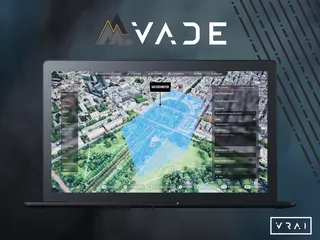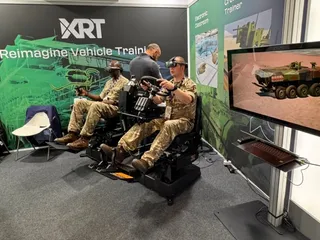The Critical Need for a 21st Century Flexner Report
Contact Our Team
For more information about how Halldale can add value to your marketing and promotional campaigns or to discuss event exhibitor and sponsorship opportunities, contact our team to find out more
The Americas -
holly.foster@halldale.com
Rest of World -
jeremy@halldale.com
The Critical Need for a 21st Century Flexner Report. Frank Lau, MD, highlights major problems in today’s medical education and suggests incorporation of cutting edge science in today’s medical school curricula.
Frank Lau, MD discusses the need for a Flexner style medical education revolution in medical school curricula.
100 years ago, Abraham Flexner published a report that radically altered medical education in the United States. The principles on which he based his report, experiential learning and use of the scientific method, still hold true. A systematic reinvention of medical education – a Flexner report for the 21st century – is needed today. At the heart of this update lies computing technologies: virtual simulations that teach physicians without putting patients at risk, and real-time knowledge monitoring systems that incorporate and reinforce up-to-the-minute evidence-based medicine.
Virtual Simulation: Minimizing Patient Risk While Accelerating Learning in a Scalable Manner
Patient safety has rightfully become a leading public concern.1 Events such as wrong-side surgery and iatrogenic complications should never happen, and the medical establishment has appropriately taken steps to minimize patient risk. Unfortunately, such changes have yielded an inevitable side effect: the chilling of medical education.
Prior to implementation of resident duty work hours, it was expected and accepted practice for medical students to be the primary care provider for low-level injuries, for interns to place central venous catheters (CVC) and thoracostomy tubes, and for senior surgical residents to lead interns through simple surgical procedures. Today, medical students are primarily observers, interns complete their internship with insufficient CVC placement numbers, and chief surgical residents often function as assistants rather than surgeons.2–6 The end result is that years are added to residency training, in some cases leading to a doubling of the time required to complete residency.7 Further compounding the problem, the number of residents pursuing post-residency fellowship training has expanded from 1,900 in 2001 to 6,551 in 2013, a 244% increase.8 In short, excellence of training has taken a backseat to patient safety.
Simulation has long been viewed as the most viable solution to the problem of training. Simulation offers many advantages over traditional, patient-based training: simulations can be tailored to learner experience and level, are always available (as opposed to waiting for a patient to show up with a specific diagnosis), users can repeat simulations until they achieve mastery, and rare but critical diseases can be presented to all users, and allows accelerated learning. As an assessment tool, simulation has been repeatedly validated across multiple specialties.
With simulation, trainees have the ability to test multiple approaches to a given clinical scenario without the constraints of patient risk. Simulation can also power knowledge dissemination: novel diseases, clinical scenarios and procedural interventions can be instantly disseminated to all training centers. For example, simulation allows trauma teams around the world to virtually manage mass casualty scenarios in near real-time.
An increasing number of medical schools and residency programs have created simulation centers but quality varies widely. At some institutions, simulation centers offer little more than mannequin-based ACLS training, while others offer realistic team-based scenarios and state-of-the-art virtual reality.
Even the best centers' offerings lag far behind consumer-level offerings, let alone those used in the military and the aerospace industry. For example, today's consumer-grade software can generate, in real-time, fully realistic facial expressions; natural language recognition can take place in real-time; third generation, high definition, 3-D virtual reality headsets with no detectable head motion latency are available to consumers and second generation motion-tracking devices are used every day by children. These four components – software, natural language interface, visual interface and physical interface – represent the foundations of meaningful virtual simulation.
Given the exponential rate of improvement in computing technologies, simulation technology will allow for fully immersive experiences by 2020, with virtual patients who converse appropriately with trainees, who are able to conduct haptic-enabled physical examinations and procedures. To get there, development of comprehensive simulation systems specifically for medical education needs to begin today.
Knowledge Management Systems
The most widely used medical education didactics and evaluation systems are relatively static. Trainees learn from multiple knowledge sources, including lectures (updated annually at best), textbooks (updated every two to three years), and online sources (variably updated). They are evaluated using assessments such as National Board of Medicine examinations (every two months) or in-service exams (annually). They then receive feedback in the form of examination scores, and their knowledge base is not re-evaluated until months or years later. For board-certified physicians, the interval between formal evaluations extends to five years.
Extensive evidence indicates that this approach does not work. Hunt et al. reported in 2009 that 66% of intensive care unit residents failed to start timely CPR during simulations. Ali et al. found in 1996 that 50% of attending trauma physicians failed the Advanced Trauma Life Support (ATLS) certifying examination a mere six months after successfully completing an ATLS course.
Further compounding this problem is the exponential growth in the rate of medical discovery. Each year, an estimated 18,000 randomized controlled trials (RCTs) are conducted; in the 1960s only several hundred RCTs were conducted each year.1 Driven directly by this pace of medical discovery, an estimated 25% of practice-guiding medical knowledge changes each year.
Knowledge Management Systems (KMS) are designed to address these challenges and are commercially available. The chief objective of KMS is to ensure that physicians can efficiently maintain a critical core of knowledge in a state of immediately accessibility. In a KMS, medical knowledge is broken down into discrete facts, and a clinician’s ability to recall each fact is tracked separately. As the recall ability decays, the clinician is prompted to review that fact, thereby keeping that knowledge immediately accessible. An extensive body of literature demonstrates that the more regularly these facts are accessed in memory, the slower the rate of knowledge decay. Examples include ATLS algorithms for managing blunt trauma, or the most current medications to be given to a patient with an acute myocardial infarction.
The real-time nature of KMS means that new clinical guidelines can be “pushed” to the physician’s profile, rather than the current system of waiting for the physician to prepare for re-certification. Such a system has been a longstanding goal of medical educators.
By regularly testing clinicians’ understanding of up-to-date medical concepts, closer adherence to evidence-based medicine can be achieved. Physicians cannot put into practice what they have forgotten, and KMS minimizes the memory loss. KMS can also improve physician morale by breaking the “cram-test-forget” cycle. Notably, KMS and their approaches can be integrated into virtual simulators, theoretically yielding greater synergies. For example, clinicians learning ATLS algorithms could periodically test themselves using virtual simulators. KMS algorithms could dictate the intervals between tests, and such intervals could be customized to each individual clinician. KMS are being adopted by trainees and training programs, but by and large, medical educators remain unaware of these options. This author advocates a national-level push to accelerate the adoption and development of these critical systems.
Implementation in Future Medical Education
Within the next decade, the computing technologies that have transformed consumer markets will be sufficiently advanced for use in medicine. These quantum leaps will enable the full incorporation of virtual simulation and KMS into medical education. The most likely implementation will look something like this:
Pre-clinical years: Students are introduced to basic concepts through KMS. When they demonstrate mastery of a related set of concepts (e.g., basic renal physiology), they will be given access to virtual simulators that allow them to integrate and test that knowledge in a virtual environment. For example, they may be required to connect a virtual, failing kidney to a dialysis system and fine-tune its function. Their performance in these exercises will feed back to the KMS, which will determine the optimal interval until the next simulation review of those concepts.
Clinical years: Students will learn clinically relevant concepts through the KMS, but with increasingly close integration with the virtual simulators. For a given clinical rotation, such as surgery, students will first demonstrate mastery of a given clinical entity and the related procedure prior to spending time with actual patients. As they write notes and give presentations on rounds, their clinical output will be digitized using deep learning algorithms such as those driving Apple’s real-time speech recognition software and IBM’s Watson. This digitized output will be fed back into the KMS, and students will be assigned to virtual simulators and patients/operative cases to ensure their learning curve is optimized.
Residency and beyond: The system will remain quite similar to that encountered during the clinical years, with the exception that clinical notes and decision making (e.g., antibiotic prescription following surgery) will be evaluated in real-time with deep learning algorithms. The physician’s decisions will be supported by the KMS, and exposure to clinical scenarios will be accounted for in the KMS’ algorithms. Virtual simulation will continue to play a critical role in ensuring that clinicians are sufficiently current to manage rarely encountered disease entities.
Conclusion
Medical education is currently facing major challenges. Patients and society are no longer willing to tolerate the mistakes that inevitably accompany the training of medical students and residents. At the same time, the rate of discovery and turnover of medical knowledge has vastly accelerated beyond humans’ abilities to keep pace. Computing technologies and knowledge management systems have incredible potential to rescue medical education. Successful and expeditious incorporation of these tools into the medical education system should be a top priority at the national level.
About the Author
Frank H. Lau, MD is a chief resident in plastic surgery at Harvard and an alumnus of Yale and the University of Michigan Medical School. He founded Firecracker Inc., a Knowledge Management System that has helped 20,000 medical students prepare for their USMLEs. He has had a longstanding passion for medical education and computing technologies, and has ongoing basic science research in tissue engineering
References
- Becher EC, Chassin MR. Improving quality, minimizing error: making it happen. Health Aff (Millwood). 2001; 20: 68-81.
- Harrison R, Allen E. Teaching internal medicine residents in the new era. J Gen Intern Med. 2006; 21: 447-52.
- Peets AD, Stelfox HT. Changes in residents’ opportunities for experiential learning over time. Med Educ. 2012; 46: 1189-93.
- Fitzgibbons SC, Chen J, Jagsi R, Weinstein D. Long-term follow-up on the educational impact of ACGME duty hour limits: a pre-post survey study. Ann Surg. 2012; 256: 1108-12.
- Carlin AM, Gasevic E, Shepard AD. Effect of the 80-hour work week on resident operative experience in general surgery. Am J Surg. 2007; 193: 326-30.
- Hutter MM, Kellogg KC, Ferguson CM, Abbott WM, Warshaw AL. The impact of the 80-hour resident workweek on surgical residents and attending surgeons. Ann Surg. 2006; 243: 864-75.
- Buchman S. It’s about time: 3-year FM residency training. Can Fam Physician. 2012; 58: 1045.
- Results and data: specialties matching service, 2013 appointment year. National Resident Matching Program website.
- . Published February 2013. Accessed September 21, 2013.


